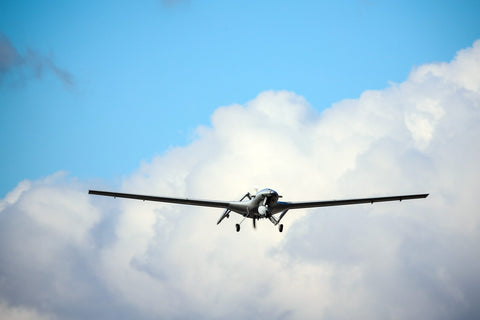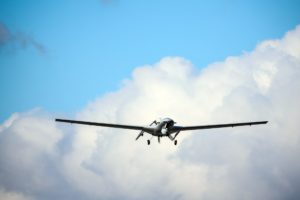
Bayraktar Drone: Ukraine’s Secret Weapon Against Russia

The complexities of the 21st-century Middle East laid the groundwork for a Turkish unmanned aerial vehicle, or UAV, that has become a staple of Ukraine’s defense since Russia invaded the country on Feb. 24, 2022.
When the United States invaded Iraq, overthrew Saddam Hussein and tried to establish a new democracy in his place in 2003, its most reliable allies — and most successful in establishing a semi-autonomous government of their own — were the Kurds, in particular the People’s Protection Units, or YPG, in Iraq and Syria, who also contributed markedly to the defeat of the Islamic State.
However, one of the American allies in the North Atlantic Treaty Organization, Turkey, had long been at war with Kurdish separatists. In principle, the Turks specified their enemies as the home-grown Kurdistan Workers’ Party, or PKK. In practice, their operations often failed to discriminate between the PKK and the YPG. Caught between two allies, the U.S. placed a ban on the sale to Turkey of certain weapons that Ankara was likely to use against the Kurds, including military UAVs. The Turkish military responded by developing a UAV of its own.
turkey’s homegrown drone
Recommended for you
Turkey’s leap into state-of-the-art technology was largely made possible by Selcuk Bayraktar, a former student at the Massachusetts Institute of Technology who established the Baykar Makina Sanayi ve Tikaret A.S. and assembled a design team that produced the Bayraktar Caliran 1, or TB1, in 2011.
After being selected over other design competitors, this served as the prototype for an operational production model the Bayraktyar 2, or TB2, which first flew in August 2014. Developing alongside the TB2 were two weapons for it, Roketsan’s MAM missile and Tubitak-SAGE’s Bozok laser-guided bomb, which had their first tests from the new platform on Dec. 18, 2015. More than 300 drones have been built so far, and, as of Nov. 26, 2021, they have logged a total of 400,000 flight hours. This first medium-altitude, long-endurance UAV was not 100-percent indigenous, incorporating technology from such NATO allies as Austria, Germany, Canada and the United Kingdom.
The Bayraktar’s stats
Each drone can carry as many as four laser-guided bombs or missiles. The wingspan is 39 feet, 3 inches, the length 21 feet, 4 inches, and the takeoff weight 1,500 pounds. Power is provided by a 100-horsepower Rotax 912-iS internal combustion engine driving a two-blade variable-pitch pusher propeller for a maximum speed of 138 miles per hour and a cruising speed of 80 mph. The operational altitude is 18,000 feet, with a maximum of 25,000 feet.
The range is 190 miles, and it can stay aloft for 27 hours at a time. Each unmanned aircraft is remotely flown by a three-person crew in a ground control station. On Dec. 4, 2020, an upgraded variant, the TB2S, made its first flight, featuring a new protrusion and antenna that access a Turkish satellite, widening its control range and improve its resistance to jamming.
GET HISTORY’S GREATEST TALES—RIGHT IN YOUR INBOX
Subscribe to our Historynet Now! newsletter for the best of the past, delivered every Wednesday.
how well has the bayraktar performed?
Although its performance is not comparable to the latest in American, European or East Asian combat UAVs, the TB2 is far more affordable, and Baykar has received orders from all over the world for various amounts of them. Turkey, which currently fields 110 TB2s, has not been the only country to commit them to combat, either. In spite of a United Nations embargo on the export of such weapons to civil war-torn Libya, reports have been coming in since 2019 of TB2s being used by the UN-recognized Government of National Accord against the Libyan National Army — including 39 shot down by the LNA. TB2s were used by Azerbaijan in its successful war in Nagorno-Karabakh, although one was downed on Nov. 8, 2020. Ethiopia has been operating four TB2s from Harar Meda airbase against Tigray separatists, but a strike at suspected fighters at Dedebit on Jan. 7, 2022, resulted in almost 60 civilian deaths.
In 2019, Ukraine announced that it had ordered 12 TB2s and was about to order 12 more, as well as an additional three ground control stations. By 2021, it had ordered another six more and announced a joint venture with Baykar to produce another 48. The prescience of that move was first suggested on April 9, 2021, when a TB2 flew a reconnaissance sortie over the Russian-dominated Donbas region. In October, a TB2 destroyed a D-30 howitzer at Hranitne.
On Feb. 24, 2022, as Russian forces launched Vladimir Putin’s “special military operation” into eastern Ukraine, their allies, the People’s Militia of the Luhansk People’s Republic, claimed to have shot down two Ukrainian TB2s. On the Feb. 27, the Ukrainians reported that its TB2s attacked two Russian road columns outside of Kherson and Zhytomyr, destroying tanks and other road vehicles, a ground-to-air missile system, a multiple rocket launcher and electronic warfare units, as well as two fuel trains. Although the Russian air forces maintained overall air superiority, Ukrainian air force commander Lt. Gen. Mykola Oleshchuk referred to the TB2, with its ability to evade notice to wreak havoc on the Russian ground forces, as “life-giving.”
Even so, the TB2 is not invincible. On Feb. 26, two were brought down near Shchaskia. The Russians photographed the wreckage of one downed over Kyiv on March 17. Another was lost over eastern Ukraine on March 29, another on April 2, and the Russians claimed one shot down by the frigate Admiral Essen off the Crimean coast on April 12. When the Russian guided-missile cruiser Moskva was sunk by two R-360 Neptune missiles near Odesa, rumor had it that TB2s were also involved, distracting some of the enemy vessel’s defenses, although that claim remains unconfirmed.
Three more TB2s were lost on April 26 and 27, and a fourth on May 1. On May 2, however, TB2s destroyed two Russian Raptor-class patrol boats near Snake Island, and on the May 7, a TB2 caught and shot down a Mil Mi-8 helicopter as it was landing personnel on Snake Island.
Fighting continues with TB2s in the thick of it. Such is the role it has played in fouling the Russian juggernaut that the Ukrainians have taken to singing a song, “Bayraktar,” which has gained a popularity to match its namesake.
historynet magazines
Our 9 best-selling history titles feature in-depth storytelling and iconic imagery to engage and inform on the people, the wars, and the events that shaped America and the world. Sale! Save $7.99 on your subscription today!









